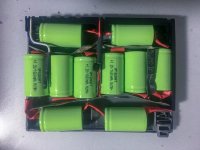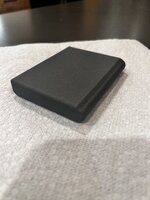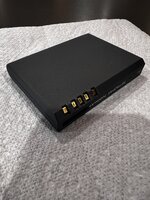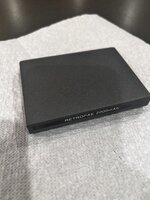A quick record of my successful Powerbook duo Type 3 battery rebuild.
This thread seems to have most of the available info on the subject so I thought I would add to it with my experience...
After reading through this thread I decided to go with 1600mAh 2/3A NiMH cells.
They match the capacity of the original 4/5A cells but give some room to easily reconstruct the cell (and are a bit cheaper).
First I used a Dremel like cutting disc tool to carefully cut through the seams at the sides and front of the pack. The back seam with the external contacts then snaps easily.
The cells I used had metal tabs already attached that I lightly soldered together to replicate the original structure including the 2 safety fuses.
Everything fits back in the pack very easily. Although the cutting tool has left quite a gap in the sides of the pack but is fully hidden when the battery is inserted into the machine so doesn't really matter.
I haven't gone through a full discharge/charge but the battery control strip on my Powerbook duo 2300c shows about 1 hour 30 mins. I was expecting more... but it's far better than not having any battery!

The cells I used were sourced from here. Although I purchased them from there eBay shop as it worked out slightly cheaper:
https://www.componentshop.co.uk/1-2v-1600mah-nimh-2-3a-single-cell.html
https://www.ebay.co.uk/itm/1-2V-NiMH-Single-Cells-with-Tags-All-SIZES-for-DIY-custom-battery-packs/231512711506
Original dead corroding cells in the battery after opening:
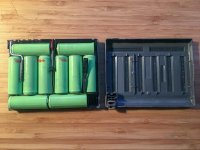
Compare new and old cells:

Reconstructed battery pack with smaller modern cells:
